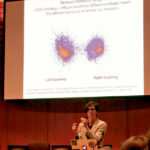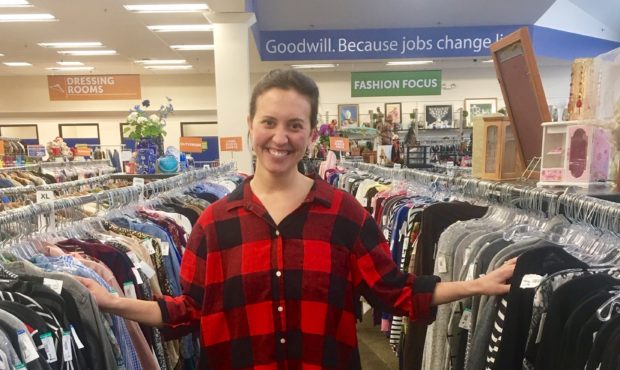You are a victim of fake news whether you know it or not
Mar 29, 2018, 7:25 PM
You have fallen victim to fake news, whether you realize it or not. One of the most recent examples came just last week. An image of a Parkland High School student made the rounds on social media. It had been altered to show Emma Gonzalez tearing up a copy of the Constitution.
In the original picture, she was tearing a shooting target.
RELATED: It’s not just Russians pushing false stories, it’s you
University of Washington Assistant Professor Kate Starbird gave a presentation Wednesday night at Bellevue City Hall on fake news, conspiracy theories, and disinformation. Dr. Starbird didn’t originally set out to study this topic. Her initial work was on how people use social media to inform, connect with, and support each other during a crises like a flood or a fire.
“I was looking at these terrible events, but studying the absolute best of humanity during those times,” she said. “I actually gave, like, a really happy talk. I don’t give a happy talk anymore. There’s nothing happy about it.”
Dr. Starbird earned her Bachelor of Science degree in Computer Science at Stanford. She has a PhD in Technology, Media and Society from the University of Colorado. She is now part of the Department of Human Centered Design and Engineering at the University of Washington.
“We teach engineers how to talk to people and understand what people actually want before we build things for them,” she said. “We’re really interested in this intersection of human behavior and technology, with the idea of really focusing on the person or the people that are using these tools.”
Fake news cannot be unseen
Let’s go back to that altered picture of Emma Gonzalez. The people who changed the image from a target to the constitution didn’t stop there. They also changed the color of her skin, put bags under her eyes, and widened her nose to make her look more ethnic.
Justy a sample of what NRA supporters are doing to teenagers who survived a massacre (real picture on the right). pic.twitter.com/czX7IHD8ur
— Don Moynihan (@donmoyn) March 25, 2018
“You can never unsee that one once you’ve seen it,” Dr. Starbird said. “Especially if you’re someone that believes this is a violation of the Constitution and they’re coming for your guns. This is going to change how you see that person. No matter that you’ve already seen the other one. No matter that I’m standing here today telling you this.”
One of the more disturbing findings from Starbird’s research was that even when false information is corrected, most people don’t internalize the correction. The true information doesn’t make the same impact as the false information
Another issue they discovered is that the term “fake news” doesn’t always carry a shared meaning. Dr. Starbird uses the term to talk about stories or social media posts written intentionally to spread disinformation. But some people use the term when referring to large news organizations like The New York Times and CBS News.
Dr. Starbrird prefers the terms disinformation or political propaganda. She feels they’re not only more specific, but more accurate in terms of how they impact society.
Why are people doing this?
When someone took that picture of Emma Gonzalez and altered it, it would be easy to assume they were pushing a pro-gun agenda. But that’s not usually the case. Dr. Starbird uses an article from the Institute of Modern Russia to explain.
The purpose of disinformation is not to convince. The purpose of disinformation is to confuse. To create muddled thinking across society with the idea that a society that doesn’t know where it can go for trusted information is a society that’s easy to control.
When we get hit with information overload and don’t know who to trust, it can be easy to give up and tune out. Concentrated efforts to spread disinformation can come from international actors like Russia, from political propaganda machines in America, and from any number of other organizations.
How disinformation spreads
Whether true of false, information spreads quickly online through shares and retweets. It can be easy to lose track of the original source of the information, leaving no way to decipher the credibility of the author.
What makes things even more confusing are the algorithms social media companies set up to decide how things appear on your page. For example, a post that is originally marked as “sponsored” on your Facebook feed will lose that moniker if you share them on your page. You haven’t been paid to share the information, therefore they’re no longer considered sponsored content.
On top of that, we all have our own filter through which we see the world. This can affect the likelihood that we will challenge the information we receive. If we agree with a story or if it confirms our feelings about something, it’s likely we won’t challenge the accuracy of the information. This is called “confirmation bias.”
“So we think we’re going out objectively to make sense of the world, and really we’re creating logical arguments in retrospect to support what we already believe. We’re all guilty of this,” Dr. Starbird said.
To make matters worse, computer algorithms that choose what we see on social media reinforce this confirmation bias by only showing us posts that we likely agree with.
“And then, users get these social cues that everyone they know thinks like they do,” Starbird said. “Those kind of social cues reinforce our misperceptions.”
We all wind up in echo chambers that are amplified by social media in ways that would never happen in face-to-face communications. Dr. Starbird gives the example of cutting a connection with a family member on Facebook over their contrary posts about the presidential election.
“You might’ve cut that connection or muted them or blocked them in ways that you wouldn’t do in the physical world,” she said.
Crisis actors and false flags
Let’s go back to Emma Gonzalez one more time. Remember when she was called a “crisis actor?”
Dr. Starbird first encountered that kind of “false flag” disinformation back in 2013 after the Boston Bombing. There was a story that the US military had planned and carried out the bombing. It was an effort to spread disinformation about that particular story. It was also meant to create distrust in the federal government.
The Boston Bombing conspiracy theory was one of the most popular stories on fake news websites at the time. Once folks clicked on that story, it led them down the conspiracy theory rabbit hole.
“It was just one of many that were present,” Starbird said. “Everything from people who were sort of just a little skeptical of GMO’s to saying that vaccines cause autism to people claiming that the earth is flat.”
Who do you trust?
In general, local media and professional journalists are likely to be telling you the truth, according to Starbird. But they’re still human and they will make mistakes. Don’t allow disinformation make you lose faith in trusted organizations like the Washington Post or ABC News (or, I’d like to add, KIRO Radio and mynorthwest.com).
The same can be said about other local information sources like city governments, police officers, and educators. Overall, they are likely to be telling you the truth.
“Some conspiracy theories do turn out to be true,” Starbird said. “I’m not here to say that everybody should have the same idea about everything. But we’re losing trust in our information systems. We don’t know where to go for information we can trust and that is undermining democracy. That is not healthy for democracy. If we don’t know how to get information, how can we make informed decisions? How can we make the right decisions?”
Dr. Starbird also urged trusting your gut. Most factual information or news stories don’t rely heavily on emotion. When bad actors try to spread disinformation, they know that tugging on your heartstrings or your anger is a powerful way to get you hooked.
If you find yourself having a strong emotional reaction to something online, that’s a good indication you should question what you’re seeing or reading.















